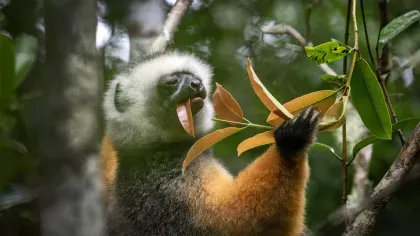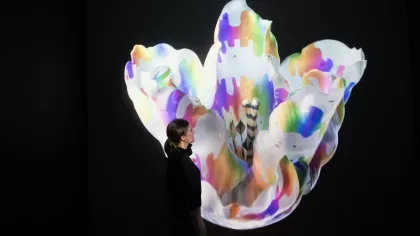6 December 2016
A royal flower- Bauer's Strelitzia
We explore Bauer's striking collection and history as one of Kew's most illustrious alumni.

Franz Bauer (1758-1840) was born in Feldsberg (now Valtice in the Czech Republic) into a family of artists. His father was court painter to the Prince of Liechtenstein and his brother Joseph continued to receive royal patronage. However, Franz is more commonly associated with his brother Ferdinand (1760-1826) together they are cited as 'the greatest exponents of botanical drawing in England since the death of Ehret' (Blunt and Stearn).
Through Nickolaus Joseph von Jacquin (1727-1817) Professor of Botany and Chemistry at Vienna University, the talent of these two artists was recognised. While Ferdinand accompanied John Sibthorp (1758-1796) as artist on his travels to the eastern Mediterranean, Franz travelled with Jacquin’s son across Europe visiting the major botanical gardens of the day. On arrival in London Franz’s skill came to the attention of Sir Joseph Banks (1743-1820) President of the Royal Society and de facto Director of Kew under George III. Banks had been on the lookout for an artist to record the plants flowering at Kew and was quick to secure Bauer’s services at the princely sum of £300 per annum on the condition that Bauer would permanently reside at Kew with the pursuit of making botanical illustrations. Franz became Kew’s first botanical artist in residence in 1790 with the grand title of ‘Botanick Painter to His Majesty’, though it was Banks who acted as his patron throughout his career.
The volume Strelitzia Depicta, or 'coloured figures of the known species of the genus Strelitzia from the drawings in the Banksian Library’ was Bauer’s second independent work and documents the Bird-of-Paradise flower, the Strelitzia. The Bird-of-Paradise flower had been introduced to Kew from the Cape in 1773, collected by Kew’s first official plant hunter Francis Masson (1741-1806). The flower was named in honour of Queen Charlotte formerly Princess Sophie Charlotte of Mecklenburg-Strelitz. This eyecatching plant must have drawn great interest when first introduced, its orange flowers are designed to attract the sunbirds and weaverbirds for pollination.
Bauer usually prepared his original illustrations by first producing a very detailed drawing in pencil and using a very fine brush to define the contours of the subject before applying the main body of paint. These studies of Strelitzia were probably illustrated from plants grown at Kew and were published using the new printing technique of lithography which was found to be more economical than its counterpart, copper plate engraving. The process of lithography involves drawing with a greasy crayon on a limestone base which is then dampened and applied with ink. The ink will subsequently adhere only to the drawing. In Bauer’s publication each lithograph was hand-coloured and their treatment is so fine that you could be forgiven for thinking that the plate is an entirely original artwork.
Bauer’s skill lay not only as an exceptional draughtsman but as a scientist and his interest in microscopic studies developed over time earning him the moniker ‘Mr. Microscope’. The illustrations of Strelitzia expertly deconstruct the form of the plant and were considered so accomplished that no accompanying text was necessary. In fact Bauer’s scientific knowledge was greatly revered with several sources expressing the view that had his work on pollen been published earlier we would have moved further ahead in our understanding of this field.
After Banks’ death in 1820 Bauer continued to illustrate the plants at Kew and his election to the Royal Society in 1821 saw him working with other naturalists of the day. With the future of Kew uncertain, the majority of Bauer’s original illustrations were transferred to the British Museum for safekeeping and now reside at the Natural History Museum. Bauer died in 1840 after a fifty year career at Kew and his monument in St. Anne’s church on Kew Green states, 'In the delineation of plants he united the accuracy of a profound naturalist, with the skill of the accomplished artist, to a degree which has been only equalled by his brother Ferdinand’. Fittingly the Strelitzia features in the frame adorning this epitaph.
Two of Bauer’s Strelitzia plates can be seen in the Inspiring Kew exhibition on show at the Shirley Sherwood Gallery of Botanical Art, Kew until 1st February 2015 (Tuesday to Sunday)
- Julia-


